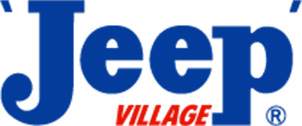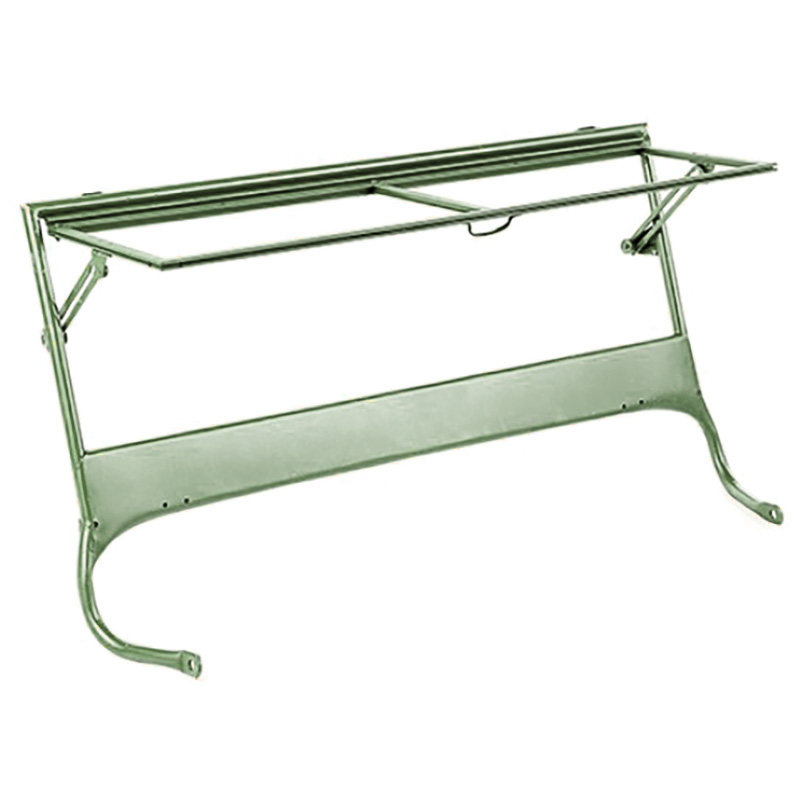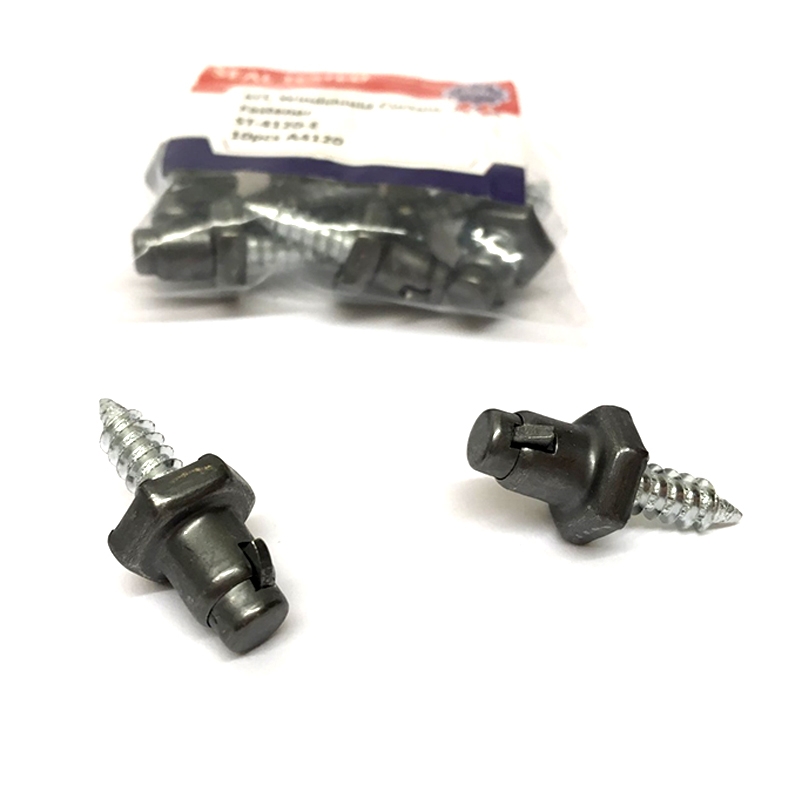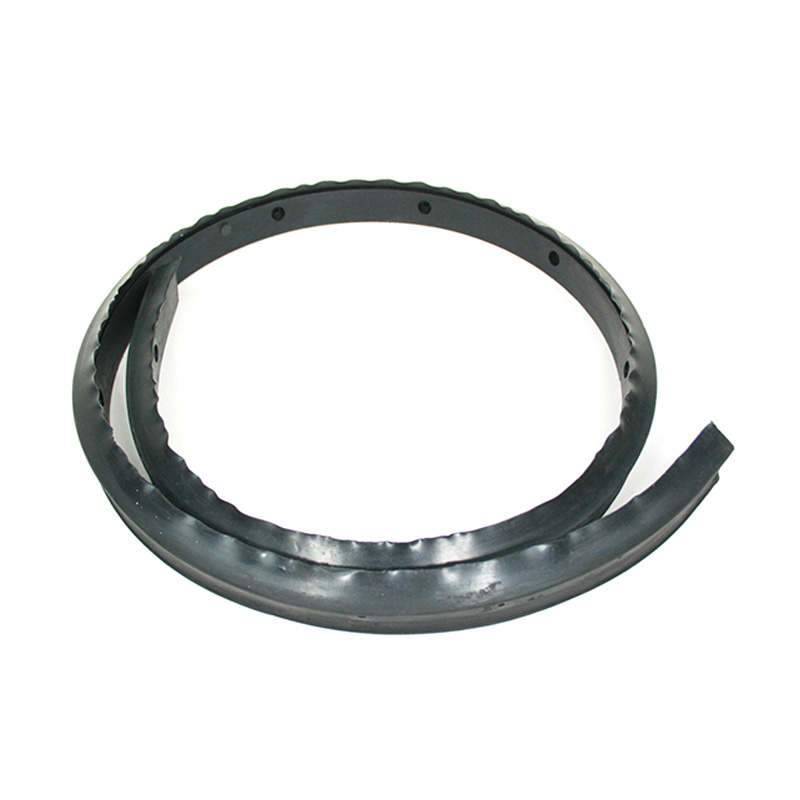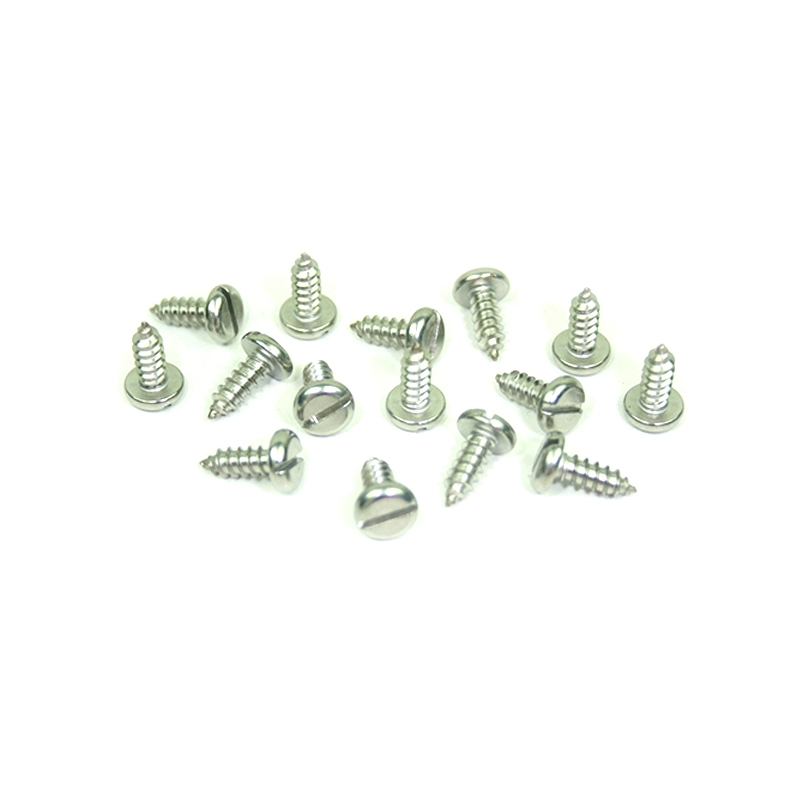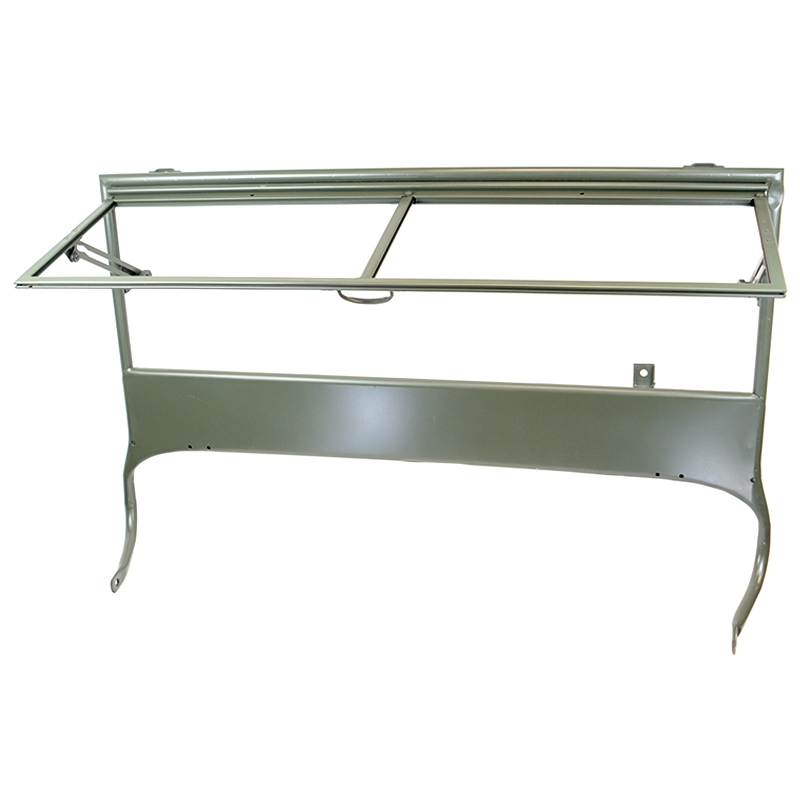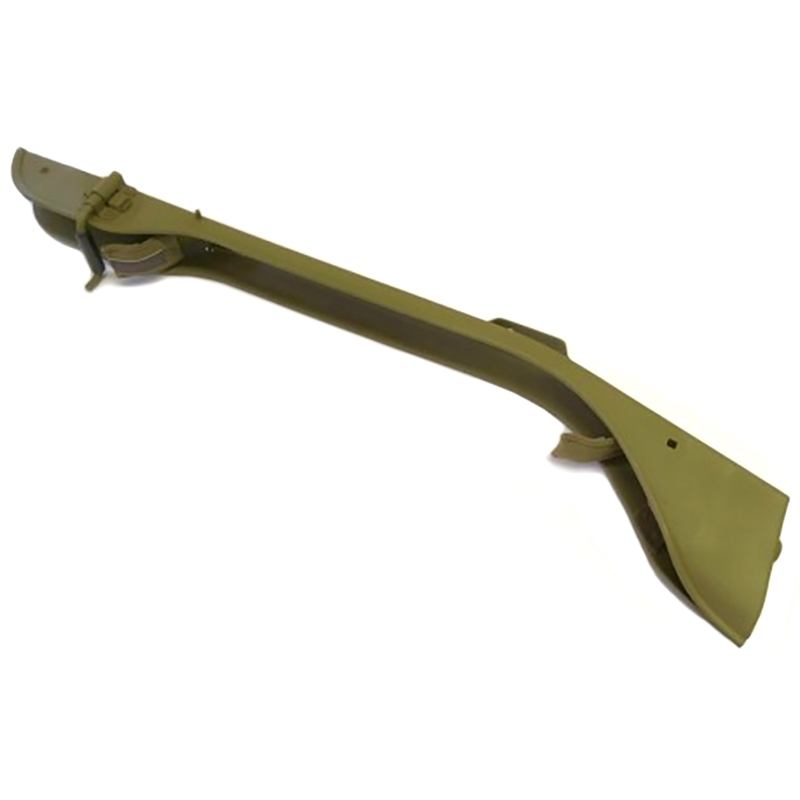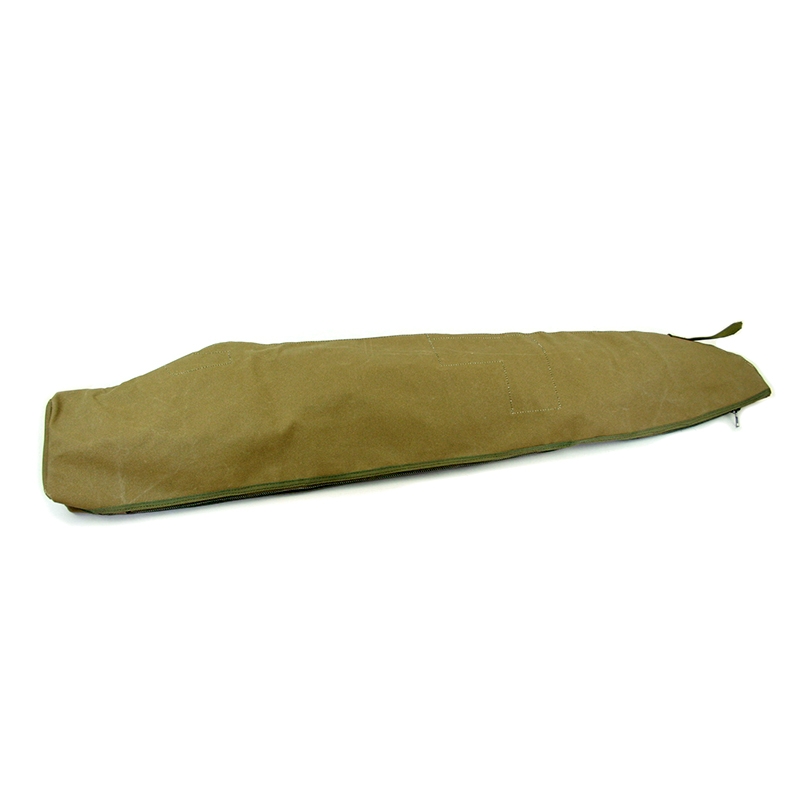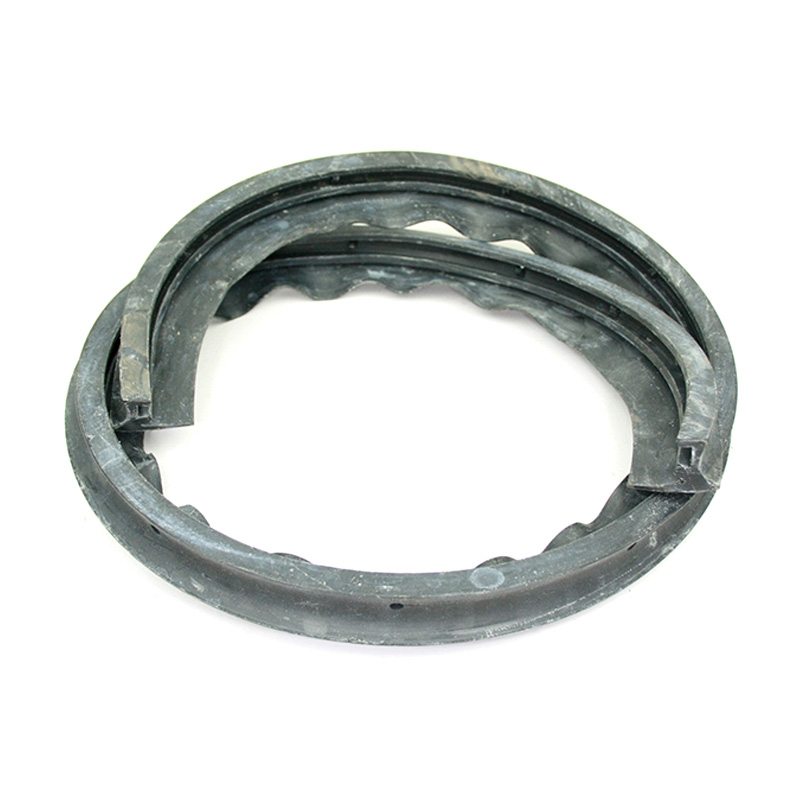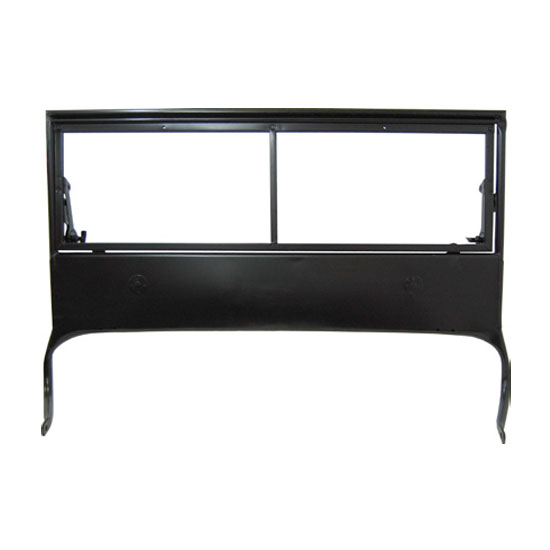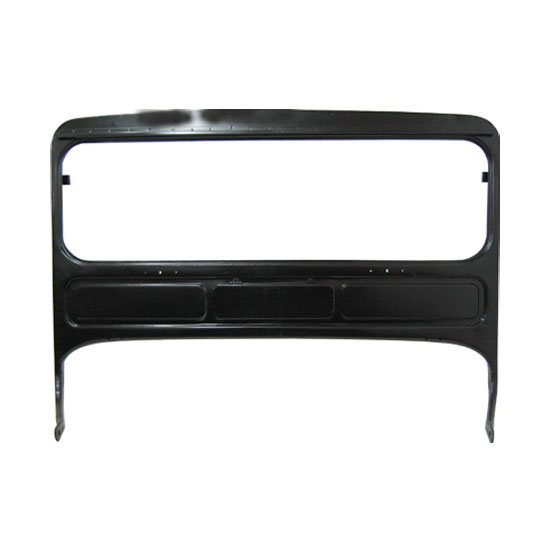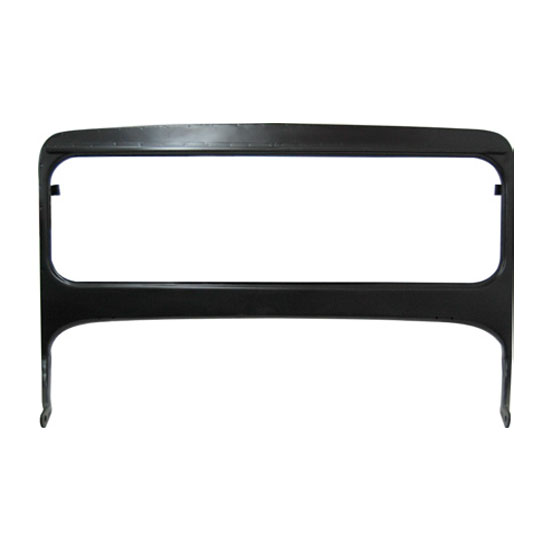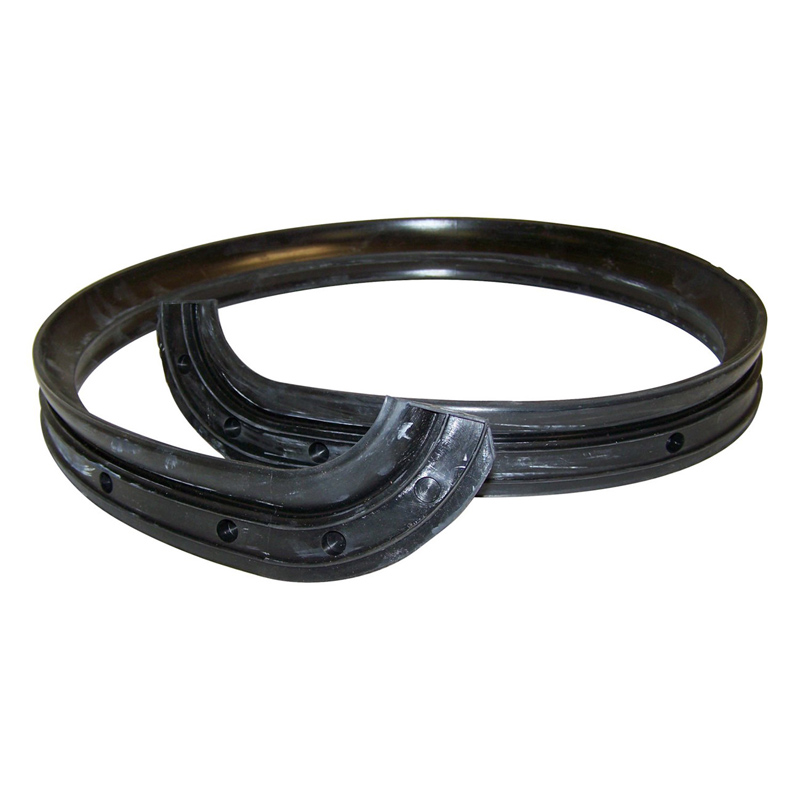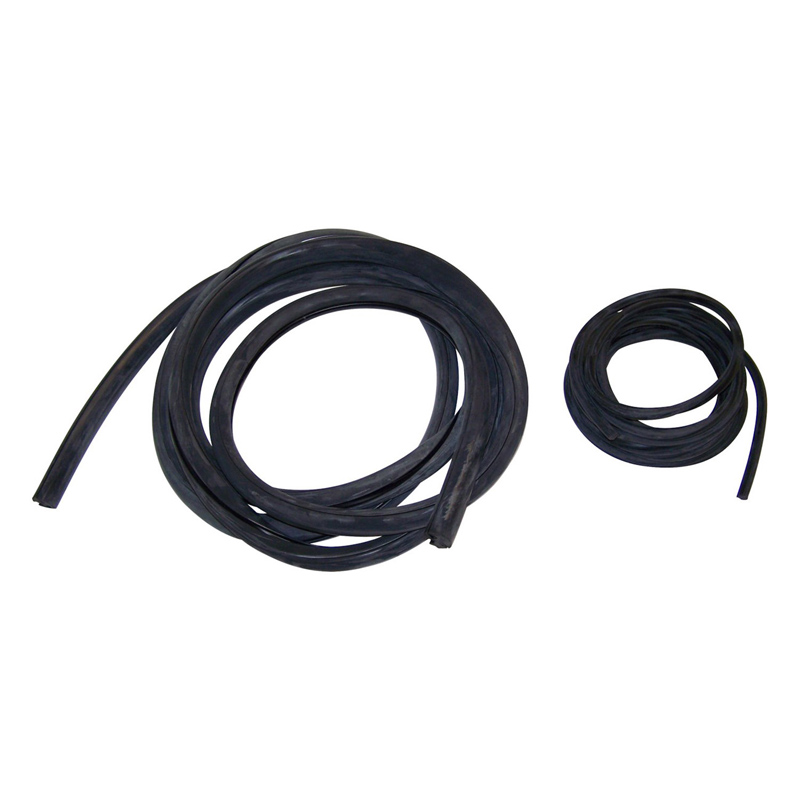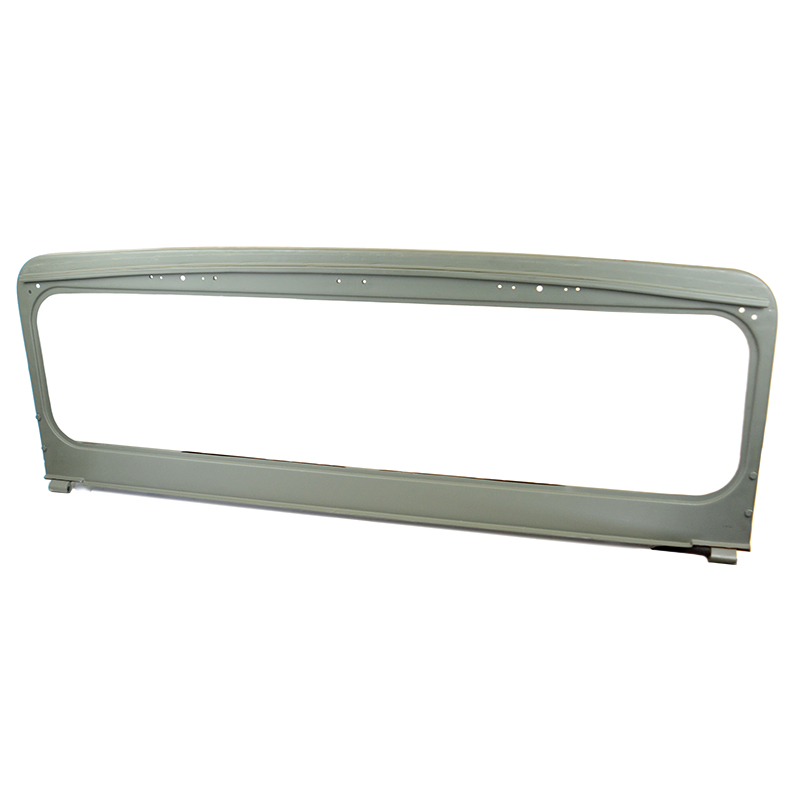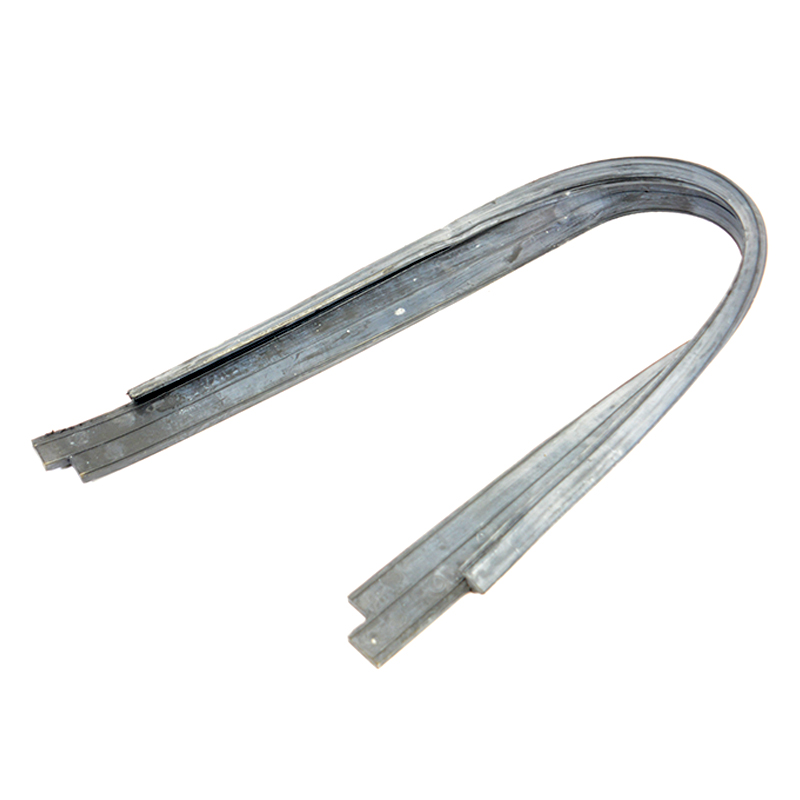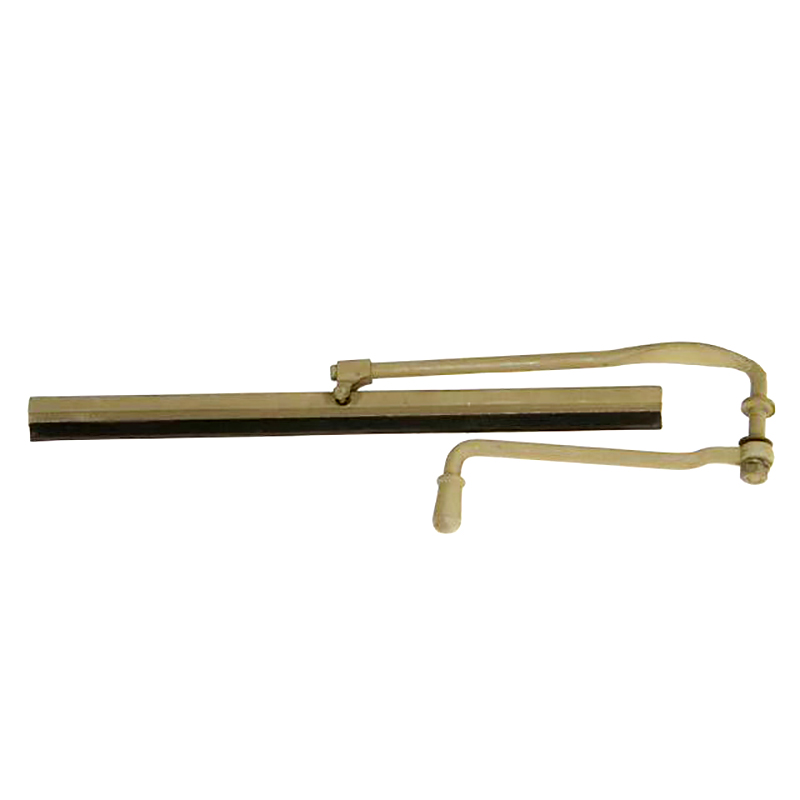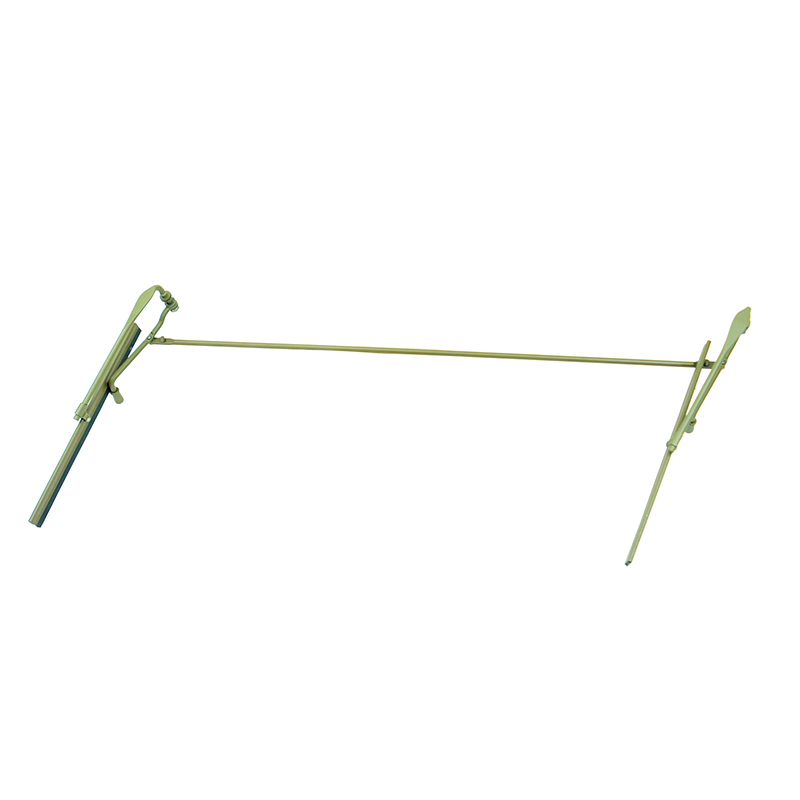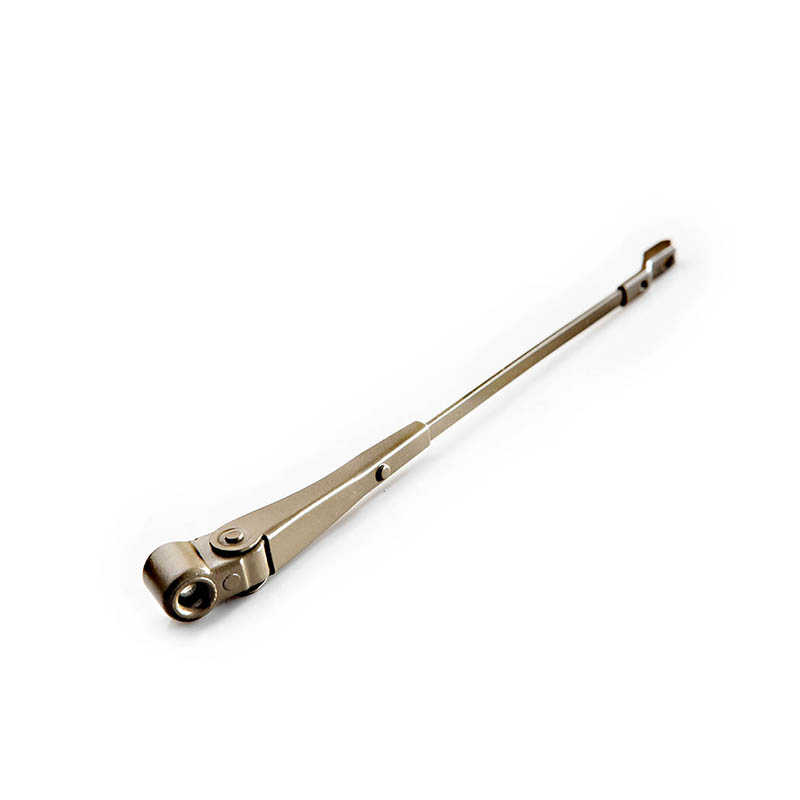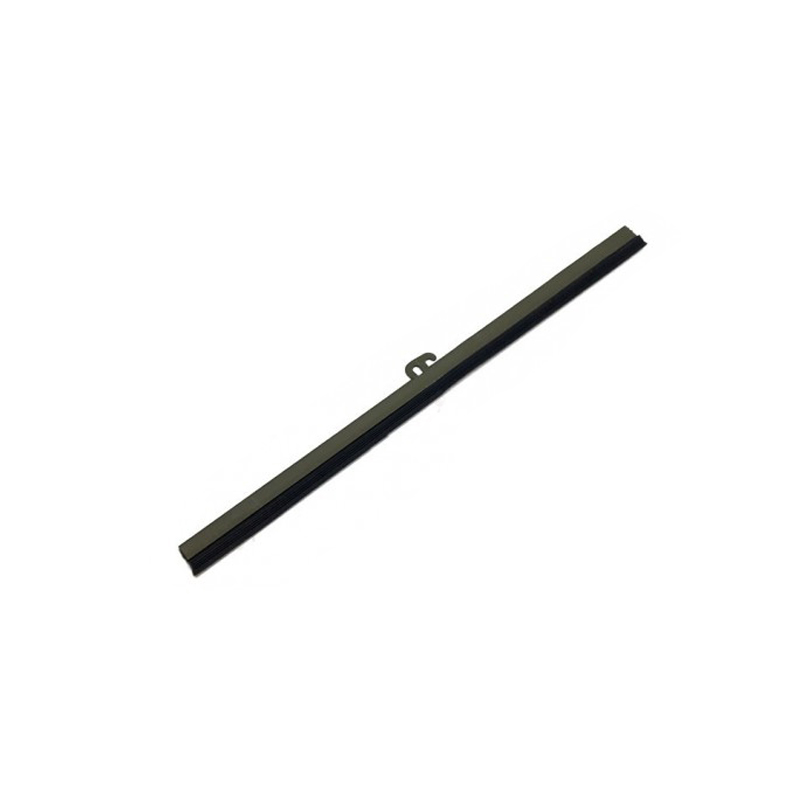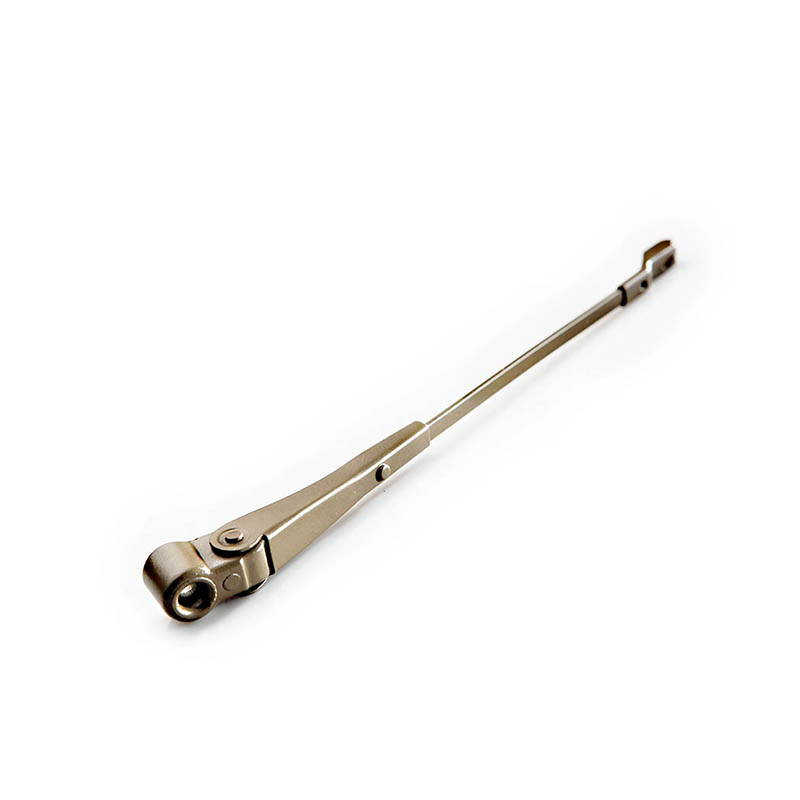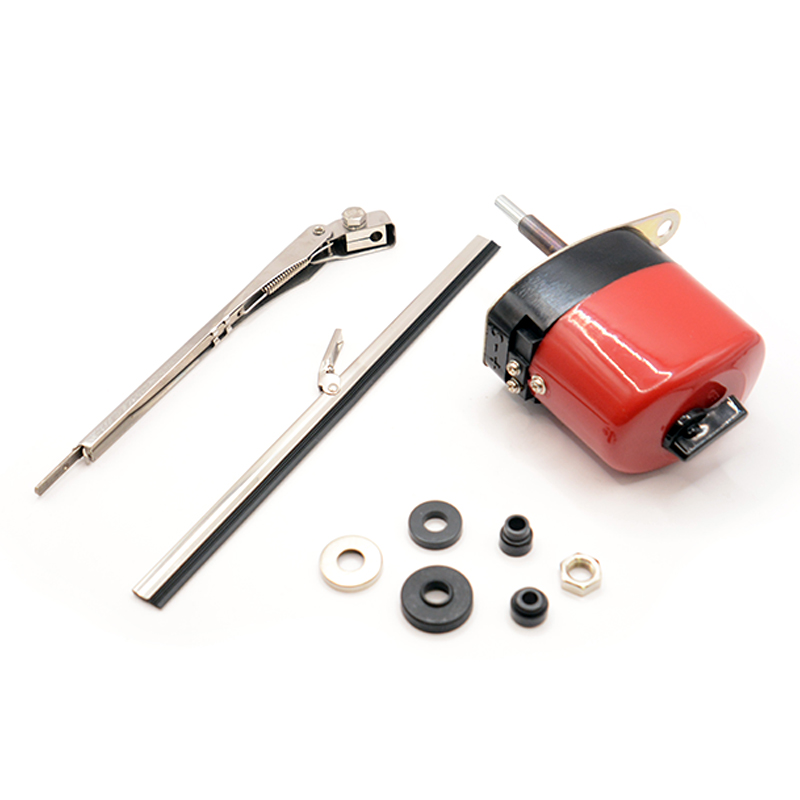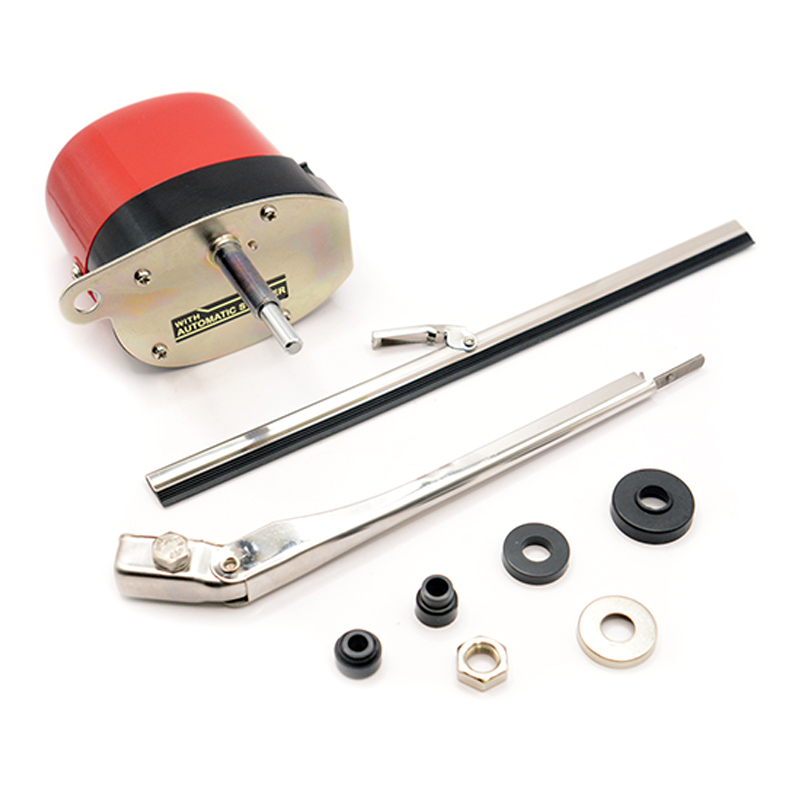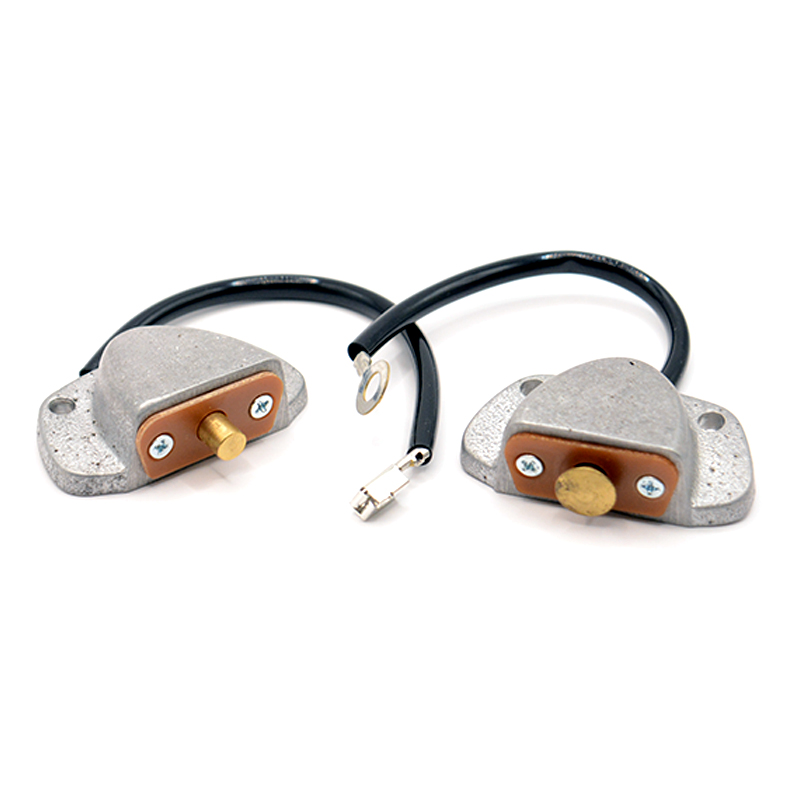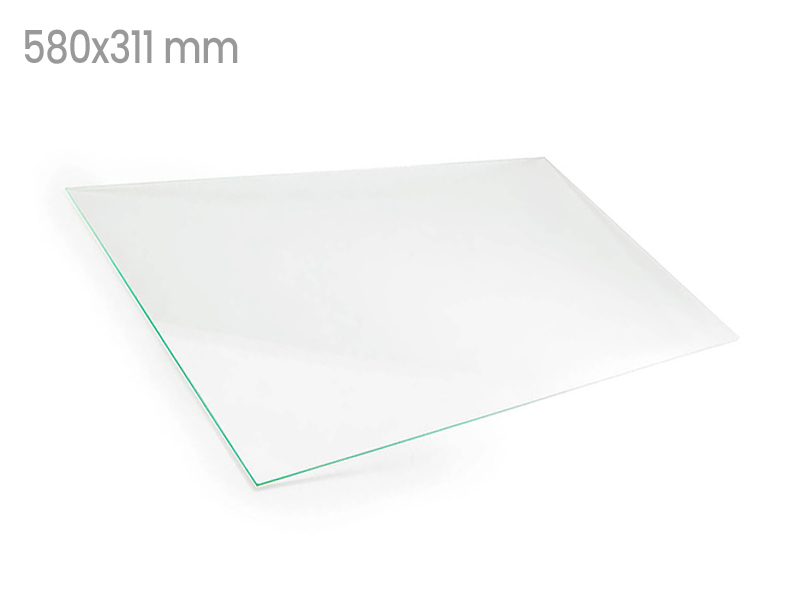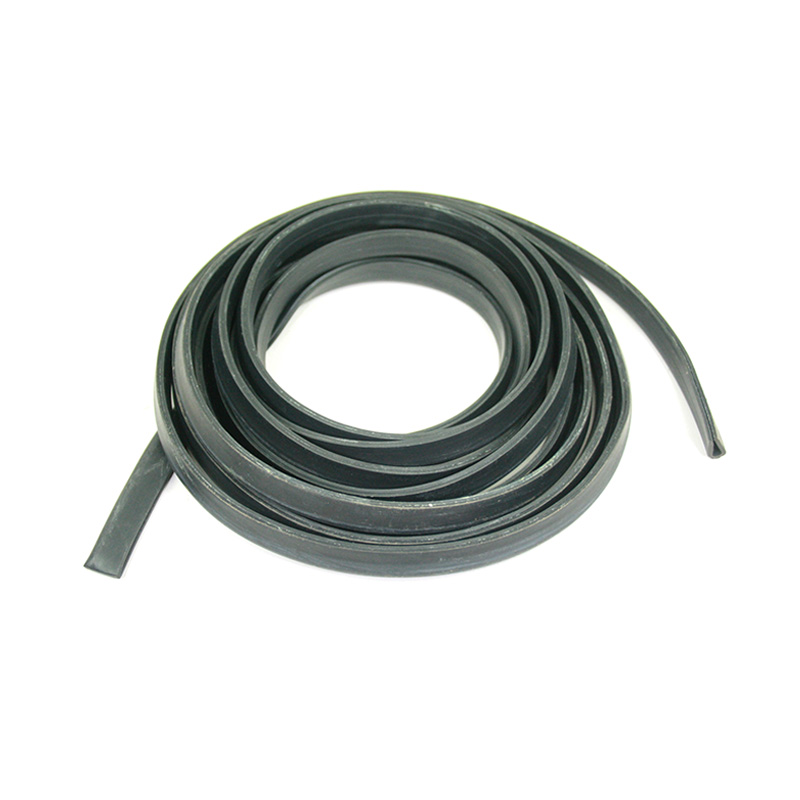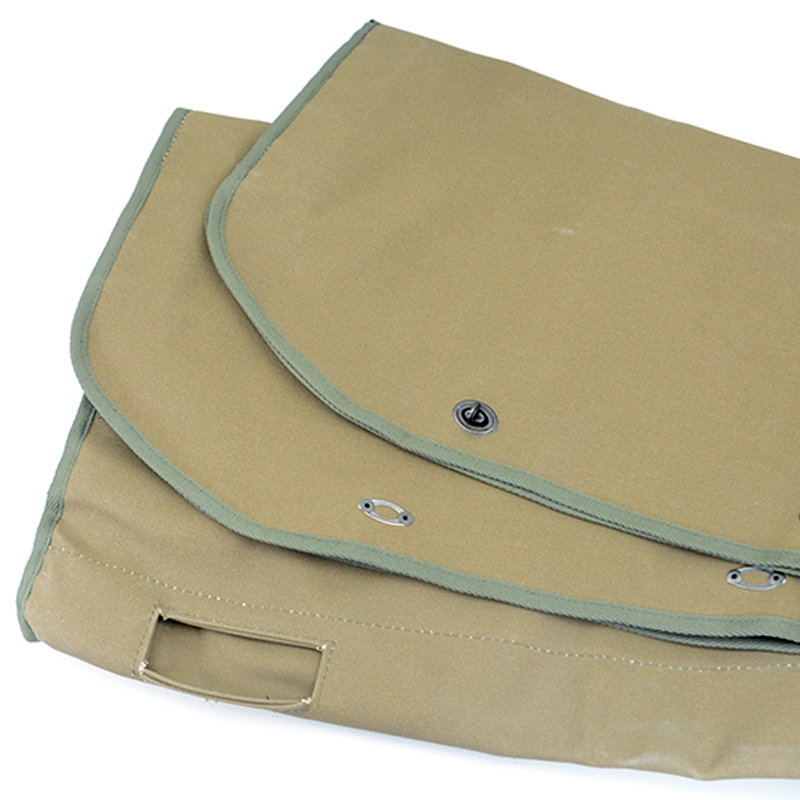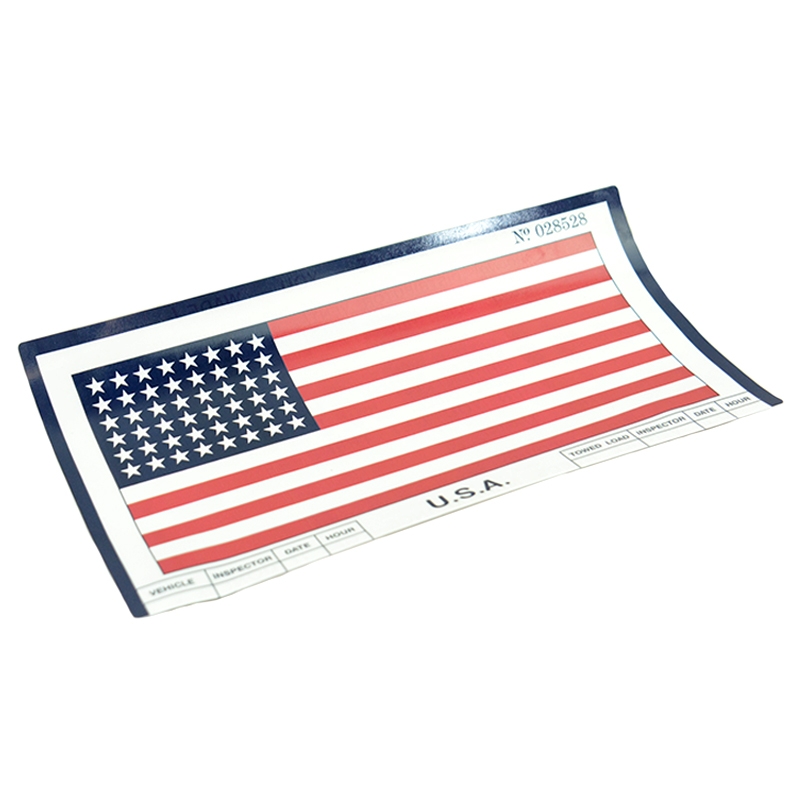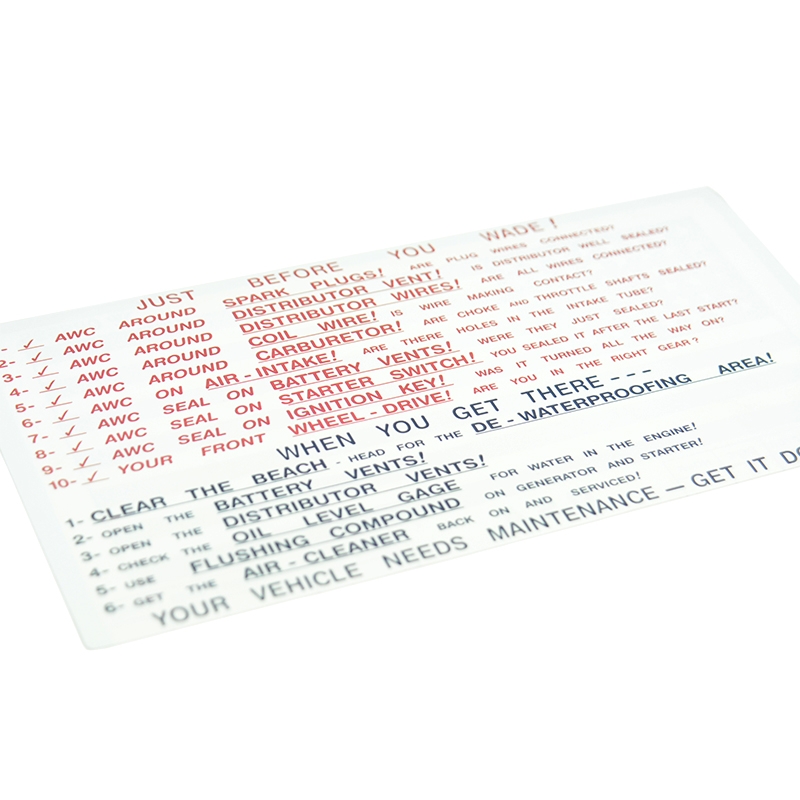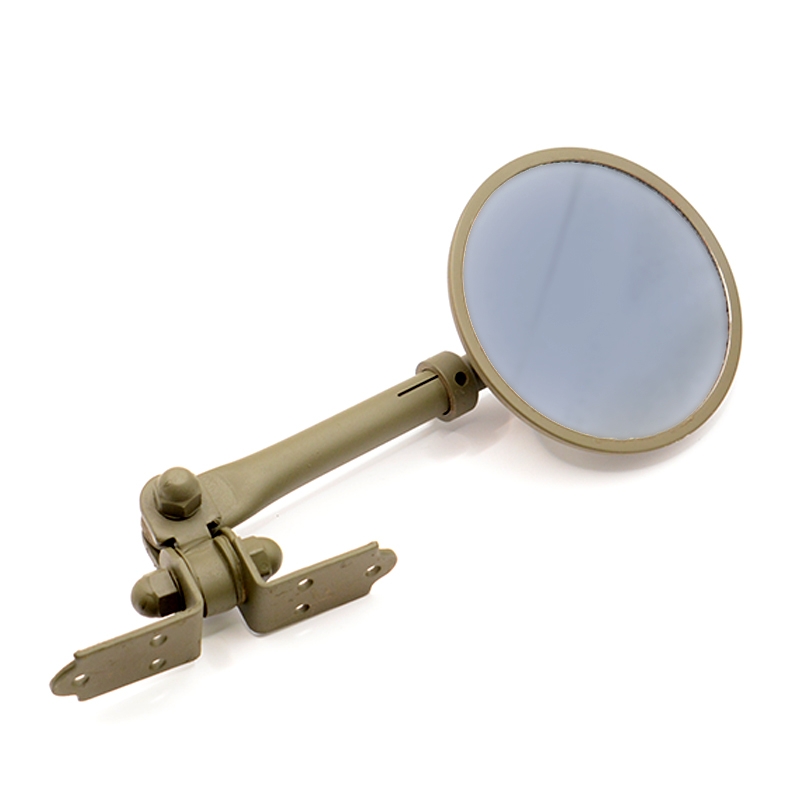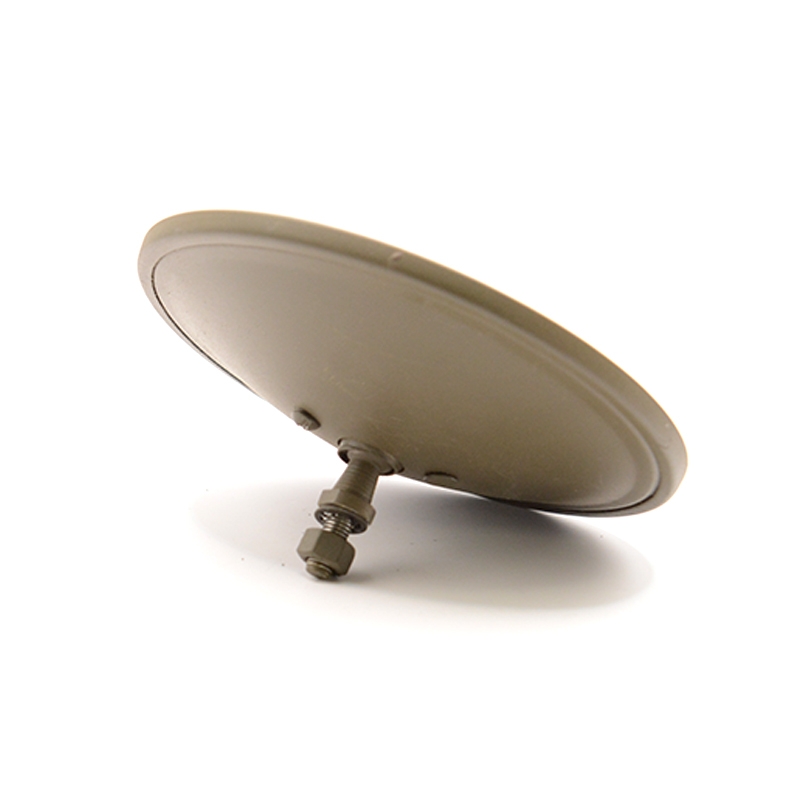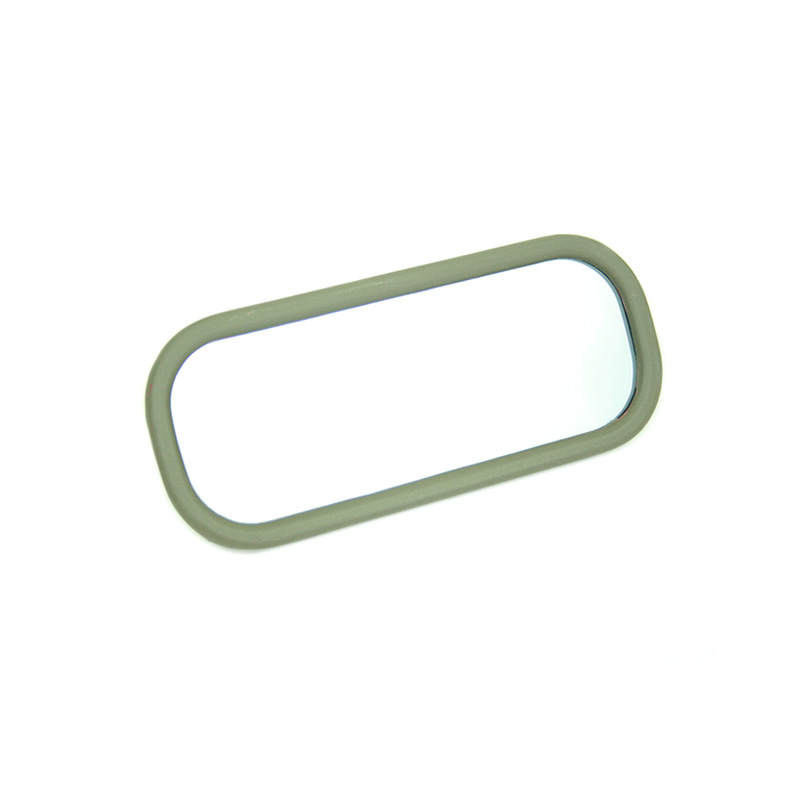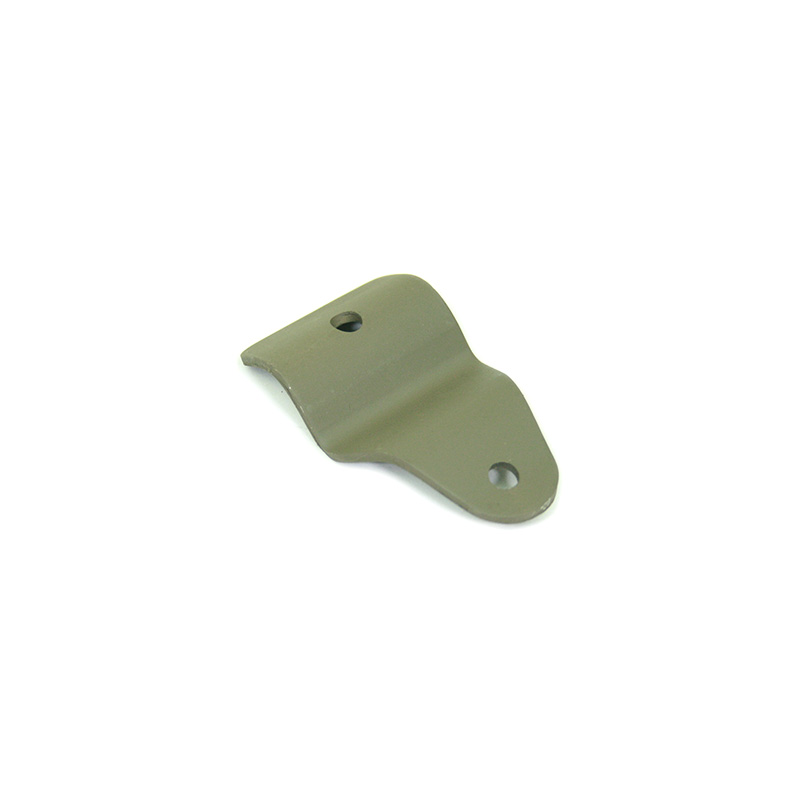
Windshield & accessories
1. Different Windshields: Early, Late, and French
The windshield is much more than just a window in your Jeep; it is an integral part of the image and sense of freedom provided by this legendary off-road vehicle. Whether raised to shield you from the elements, partially open for some fresh air, or completely lowered for the full wind experience, the adjustable windshield is a feature that emerged from the early days with the Bantam BRC-60 and is still used today on the latest Jeep Wranglers. A windshield that has become uncommon compared to vehicles of the 1930s where it was merely an optional feature.
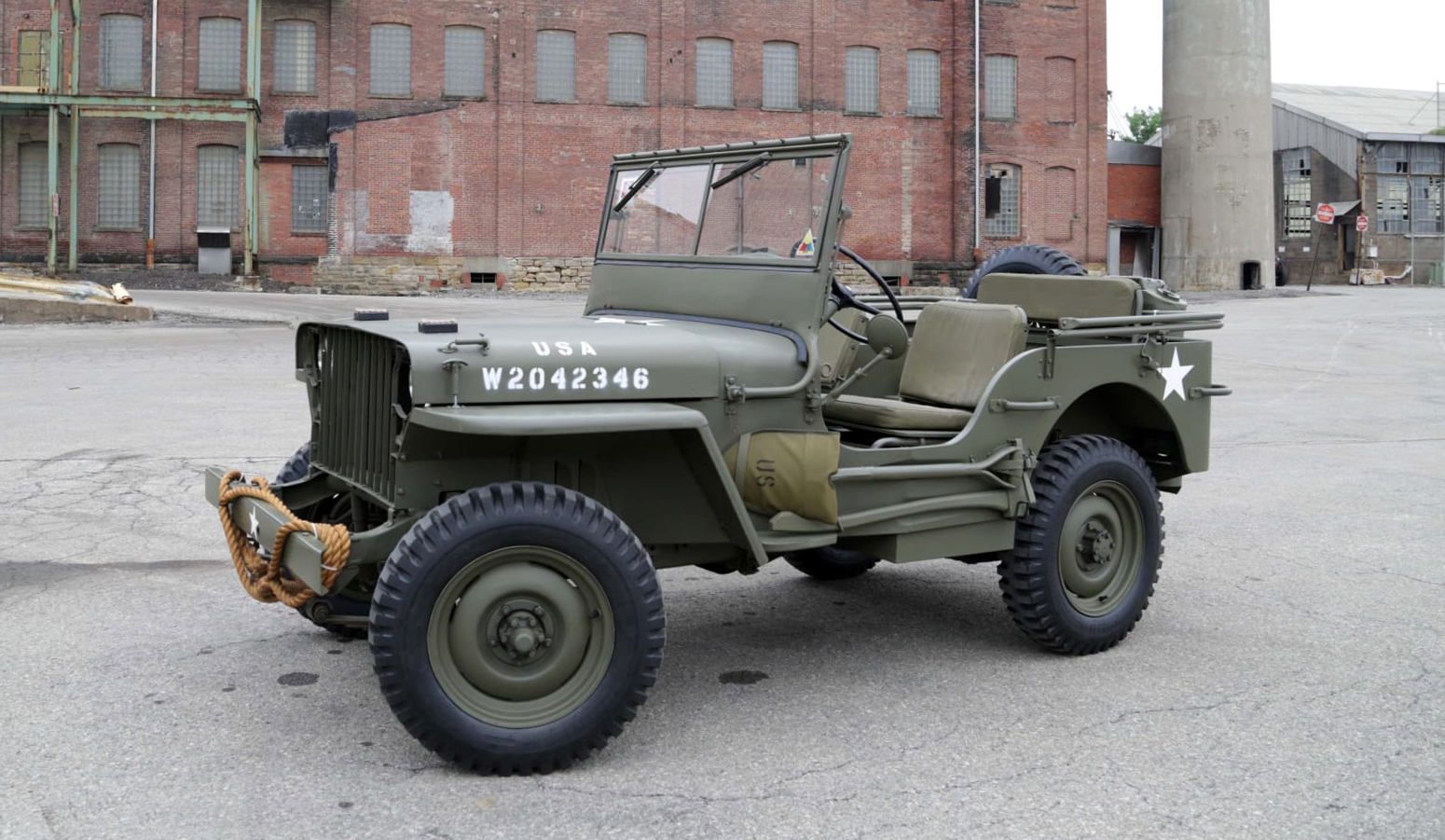
Jeep Willys MB Slat Grill in front of the Bantam factory in Pennsylvania
The "Early" windshields were initially used on the Jeep MB Slat Grill (serial numbers 100001 to 103544, approximately December 1941) with the unique feature of a 5 cm high metal strip under the windshield.
1. WOA3210E 2. WOA4120E 3. WOA2476 4. WOA2489
Quickly, they modified the windshield with a higher metal strip beneath it to raise it for better protection. They also added mounting brackets for the famous rifle holder (designed for the U.S. Army's semi-automatic M1 Garand rifle).
1. WOA3210 2. WOA4120 3. WOA11319 4. WOA205
French Jeeps, specifically the Hotchkiss M201, also had specific variations. You can quickly distinguish the windshield difference with the presence of hood stops on the top of the windshield, above the glass, instead of being located on the front of the hood like the Willys MB and Ford GPW.
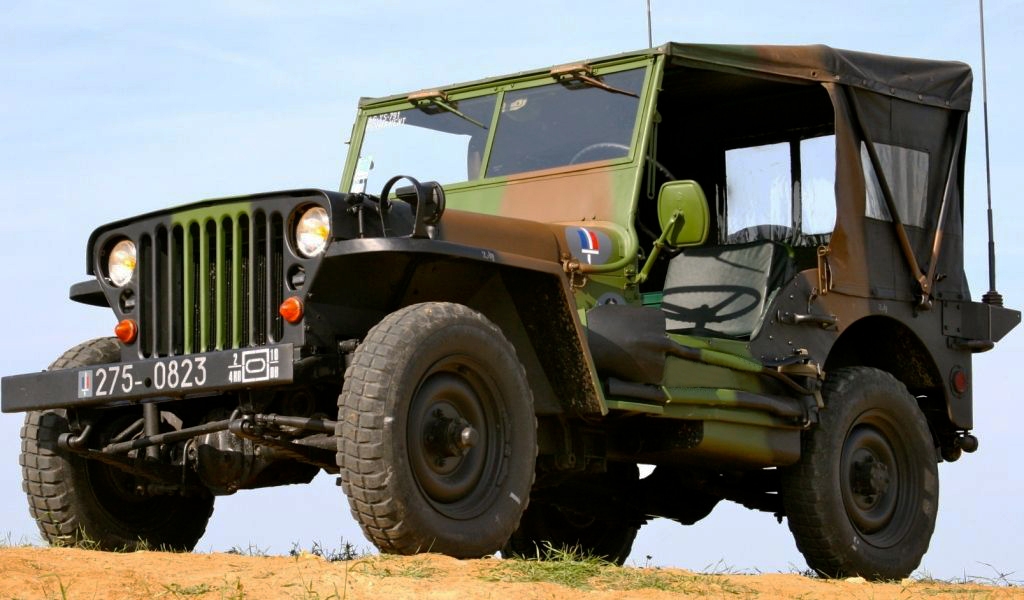
Hotchkiss M201 FAR (Force d'Action Rapide) in its 3-tone Central Europe camouflage (credit: Jérôme Hadacek)
Another specificity is the lower windshield joint, which is thicker to improve sealing under the windshield frame, and the use of clips instead of flat-headed screws for its attachment.
1. HO60863K 2. WOA4680 3. HO60296 4. HO40533
N.B: There were also windshield risers on the Hotchkiss M201, a kind of wooden wedge at the top of the windshield to raise the canvas and facilitate driving with a kepi.
2. Post-war Models: What are the Differences?
Post-war models brought their share of changes to windshields. Dimensions and designs evolved to meet the changing needs of the US Army and the technologies employed. The developments are notable on the military models M38 and M38A1, whereas civilian models simply followed the windshield evolution of their khaki counterparts.
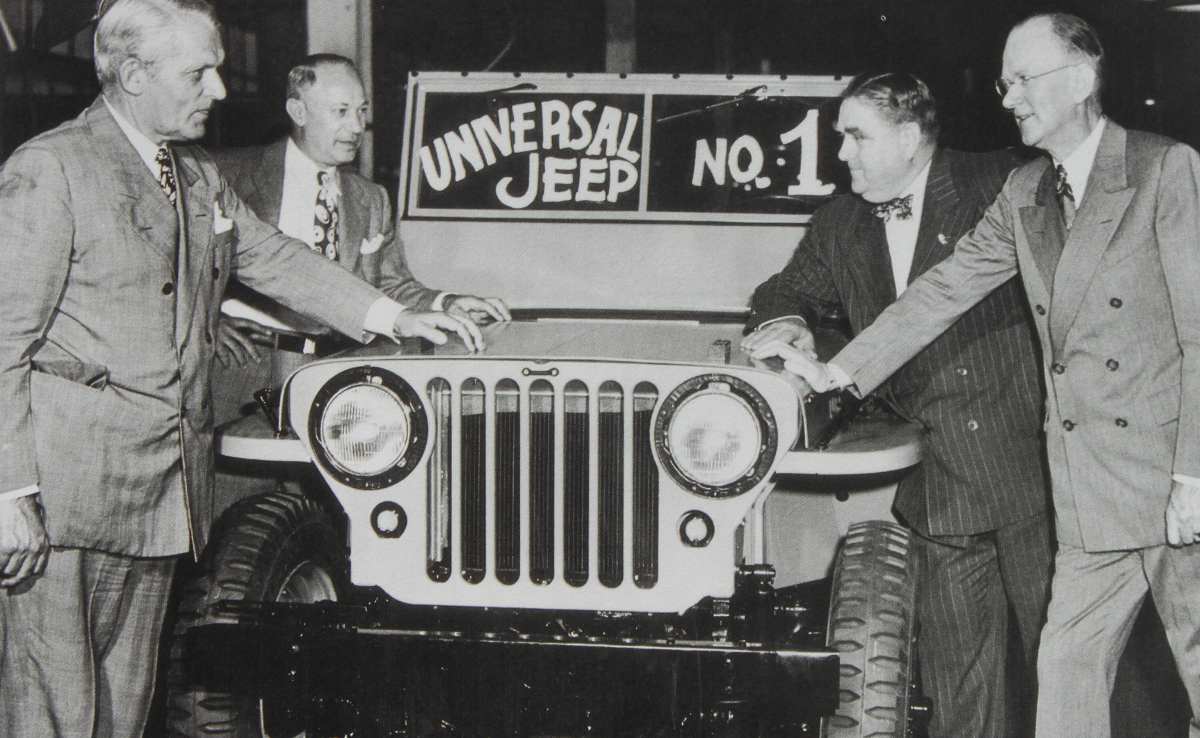
The Willys-Overland CJ-2A, also known as the "Universal Jeep"
The windshield frame of the CJ-2A is almost identical to that of the MB, with the rifle holder removed, logically unnecessary for civilian use. The same goes for the CJ-3A with the M38, CJ-3B with a mix of M38 and M38A1, and the CJ-5 with the M38A1.
1. WO663628 2. WO671031 3. WO681466
Resembling a khaki CJ-2A at first glance, the Willys M38 differs significantly with its windshield frame, which has nothing to do with its older sister, the Willys MB.
The most noticeable difference is that there is only one glass (except for cannon door versions and in a few cases, modified with 2 glasses). There is no longer a compass to open the glass frame; instead, there is a ventilation hatch in the center of the metal, as well as a rail system for the canvas top replacing the simple nipple and eyelet system.
Finally, the windshield wipers are no longer above, obstructed by the canvas top, but are underneath the windshield glass.
1. WO673286 2. WO674234 3. WO680429
The Willys M38A1 is completely different from the Willys M38, hence the importance of the A1 after M38 in your search for spare parts for your Jeep.
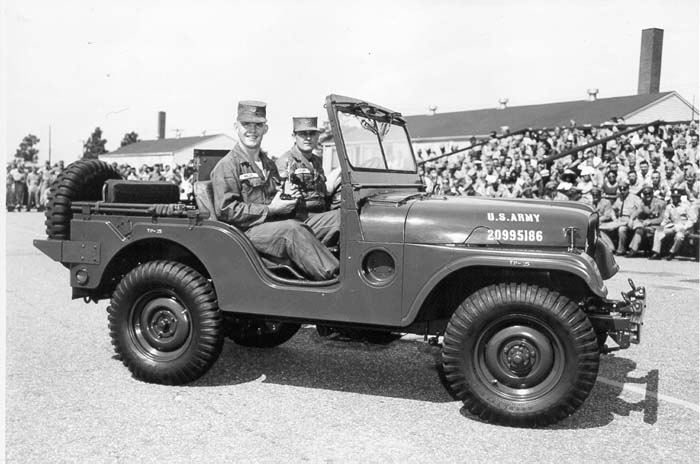
Willys-Overland M38A1 1959
This time, we return to windshield wipers above the windshield, with 2 windshield glasses (and, conversely, in rare cases with only one glass). As a new feature, there are now hood stops at the top of the windshield (which the Hotchkiss M201 will adopt as an evolution), the elimination of the ventilation hatch, also the elimination of the famous rifle holder, and finally, an evolution of the windshield with a hinge system to tilt it instead of having the frame on a pivot (a choice still retained today on our Wranglers).
1. WO680559 2. WO680505
3. Windshield Wipers: Manual, Vacuum, Electric
Windshield wipers play an essential role in ensuring optimal visibility in rainy or snowy weather, although the Jeep is best enjoyed in good weather. Discover the different types of windshield wipers available for your Jeep, their years of use, and their evolution.
The first factory-installed model from 1941 to 1943 consists of two very simple parts: a hand lever on one side and a wiper arm with its blade on the other. How does it work? Completely manual for both the driver and the passenger by operating each fixed lever.
There was then, in 1944, a very clever and simple improvement: the addition of a rod connecting the 2 arms to operate the 2 wiper blades at the same time!
1. WOA2586 2. WOA12864A 3. WOA11433
The second model is a vacuum system introduced in 1943 for the Jeep, but was already originally installed on Dodge ambulances, for example. This vacuum system, more common on Jeeps from 1944 with the model "TRICO S583-1", larger than the previous one, is very ingenious, allowing the wiper blades to be mechanically automated by the air sucked in through the intake manifold.
These wipers were initially available as a kit (G503-5700249) but were only granted for regions with heavy precipitation. Then factory-installed from March 1945 for Willys MB and May 1945 for Ford GPW. This vacuum system will also be used for M38, M38A1, and civilian models CJ-2A, CJ-3A, CJ-3B, and even CJ-5.
1. WOA12865D 2. WOA12864
1. WOA12865 2. WOA12865D 3. KIT66
Standardized later on, it became very common to replace the somewhat temperamental vacuum system with an electric motor on the CJ. Hotchkiss understood this very well for its M-201, so they opted for a central electric motor that operates the 2 wipers connected by a rod. Remember, the same operation as the Willys MB, but this time, automated!
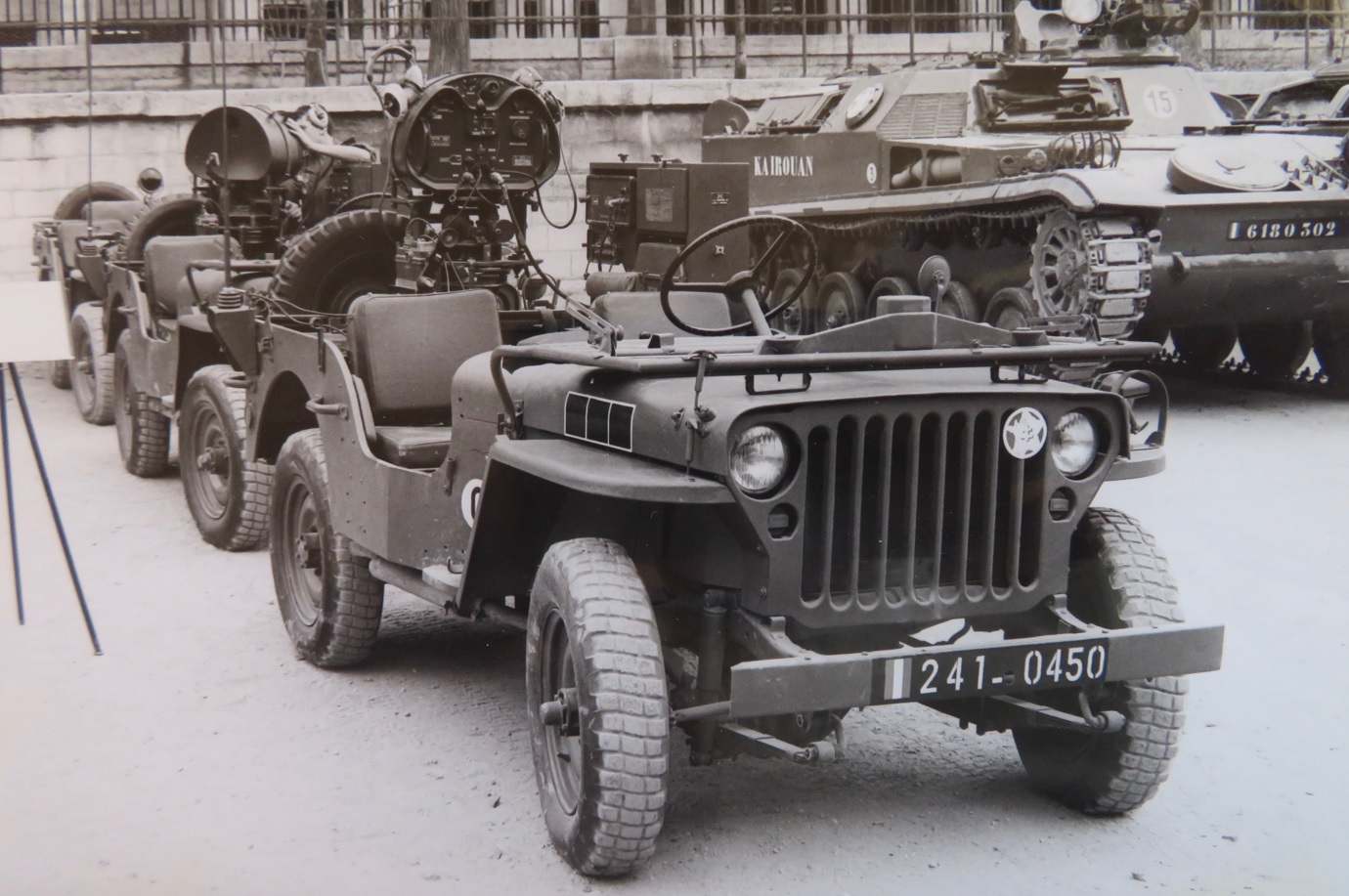
Jeep Hotchkiss M201 equipped with the RASURA surveillance radar system
A recognizable feature on a Hotchkiss M-201 is that they have a windshield wiper switch on the dashboard, making contact with the windshield when it is in place and disconnecting when it is folded down onto the hood.
There is also the addition of a protective sheet for the wiper mechanism on the top of the windshield.
1. KIT624 + 2. HO60961 3. HO60852
4. Types of Glass: Choosing Clarity
Since 1892 with the famous Mademoiselle Doumayrou, the windshield has become an essential part of the car, a fashion item despite its danger in a collision. It was in 1909 that Édouard Bénédictus invented laminated glass, which prevents glass fragments from being projected in case of a collision, making the windshield secure rather than a danger on impact.
Equipped with this technology, the Jeep Willys MB and Ford GPW had the manufacturer's engraving at the bottom right, indicating the glass manufacturing date and safety standard. The most well-known is Libbey-Owens-Ford (L.O.F) located in Toledo, Ohio.
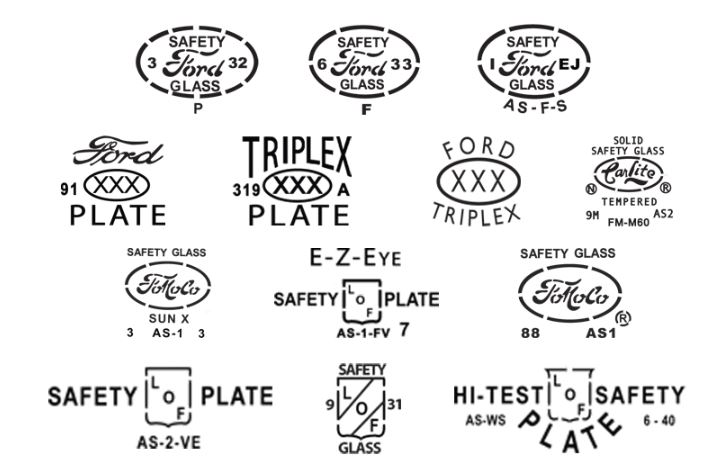
Founded in 1930 by the merger of Libbey-Owens with the Ford Plate Glass Company, they were the first to produce laminated safety glass for automobiles and notably won the contract for the windshields of the Ford Model A.
The engraving reads "LOF HI-TEST SAFETY PLATE".
Same company, but a different engraving to distinguish the GPW from the MB in addition to the "F" mark. The engraving reads "FORD SAFETY GLASS".
In some cases, we have the company Triplex Safety Glass (Pilkington Automotive Ltd), located in St Helens, United Kingdom.
Founded in 1929 by the merger of Pilkington and Triplex (the company of laminated glass inventor Edouard Bénédictus).
The engraving reads "TRIPLEX PLATE".
1. WOA2478TRI 2. WOA2479 3. WOA2250
5. Essential Accessories
Finally, we will discuss accessories for your windshield, such as the rifle rack we mentioned at the beginning of the article.
Speaking of the rifle rack, as mentioned earlier, it was not provided on the so-called "Early" Jeeps from 1941 to 1942; it was only later that it was mounted on the bottom of the windshield, with the cross on the left, barrel on the right, and trigger downward. Modified by the G.I.s themselves, it was sometimes turned upside down on the windshield, fixed head up on the left side of the dashboard, or on the driver's side fender.
Often lowered for clarity and agility for the G.I., the windshield was stored in its cover not only to protect it but also for a reason not always obvious at first glance: not to indicate its presence to the enemy with the sun's reflection on the glass.
A revealing reflection, especially to enemy aviation during reconnaissance, which is why an American star was sometimes added to the canvas to, on the contrary, indicate to the allies that the vehicle was indeed an American Jeep.
The most restrictive aspect is that it also covers the rifle rack, so it was sometimes relocated by the G.I. or the cavalry's leather cover was preferred.

Another accessory much less common nowadays is the "Defroster" kit (dégivrage in French) manufactured by The Fulton Company in Milwaukee, for military vehicles from the winter of 1942 and notably used for the harsh winter of 1944.
It is a heated lens that suctions with putty onto the driver's side windshield and connects to the ammeter or ignition switch, along with an additional switch under the dashboard.
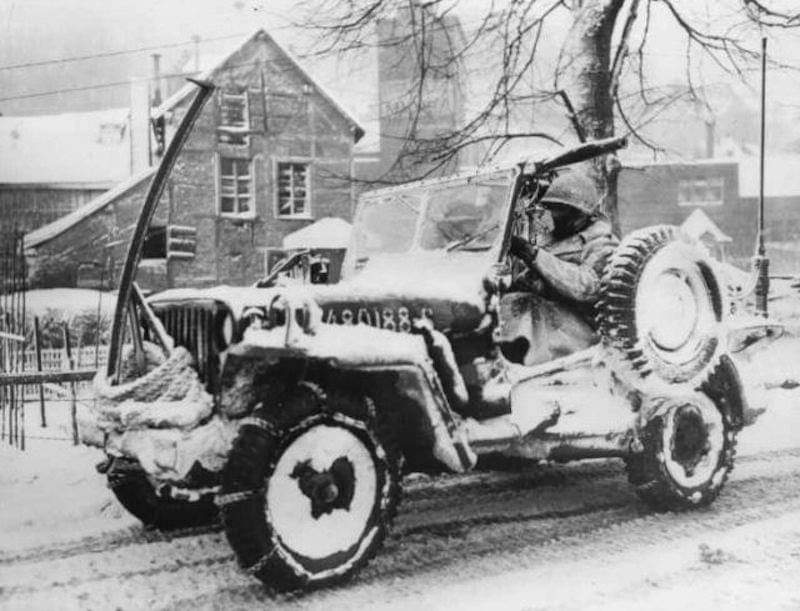
Have you heard of the Wading Flag?
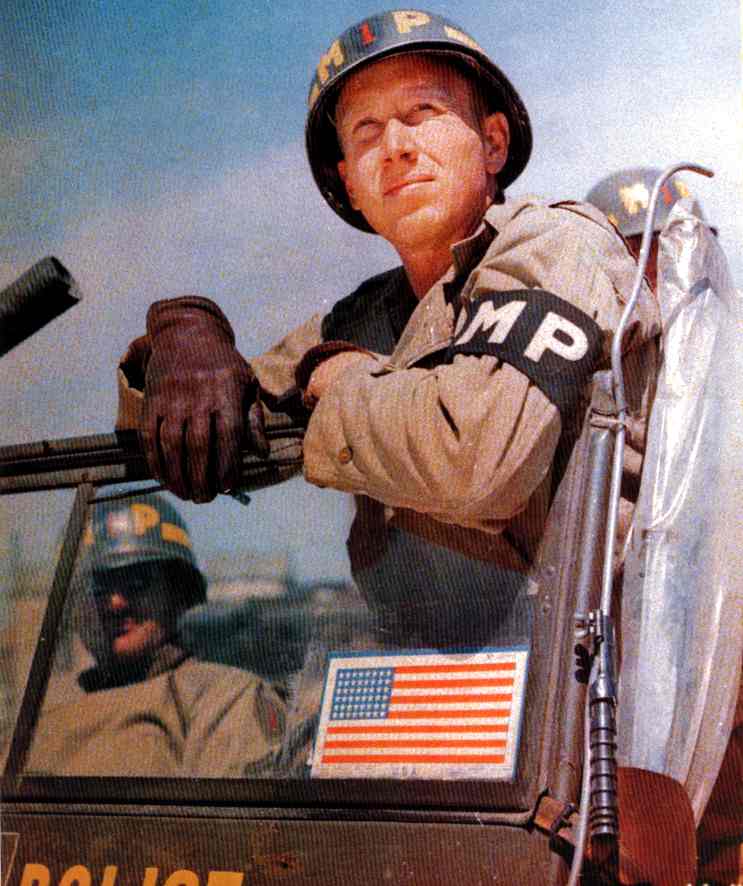
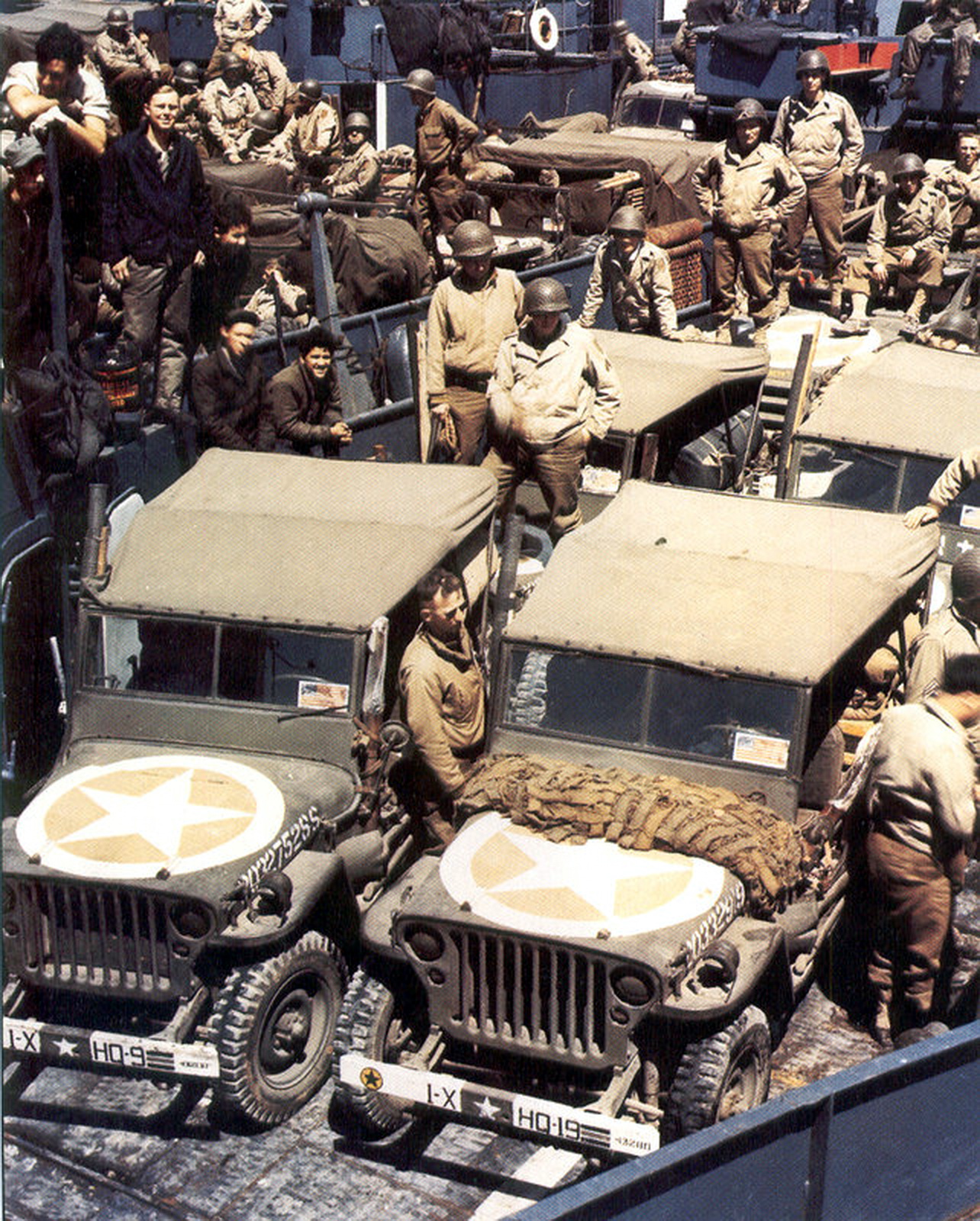
Wading flag on a Military Police Jeep and on Jeeps of the 1st Infantry Division during D-Day
The famous United States flag, still with its 48 stars, affixed to the windshields of American vehicles during D-Day.
This "invasion flag" had multiple roles to prevent any errors during the landing on the Normandy beaches.
On the front: Informs about the vehicle's serial number and that it has been inspected by inspectors, but most importantly, it signals to the French population that the Jeep is indeed the long-awaited American liberating vehicle.
On the back: Informs the driver of the multiple checks to be performed on his vehicle Before and After landing.
Brought by the G.I.s in the field and/or copied on the CJ-2A, the interior mirror is not a factory accessory but remains a very useful addition on the road, much less so on the battlefield, we agree.
Although the mirror is smoked to avoid being spotted by its reflection, it is rare to find a rearview mirror on the windshield during World War II; it was more of a relocation of the side mirror which offers less visibility than on the windshield.

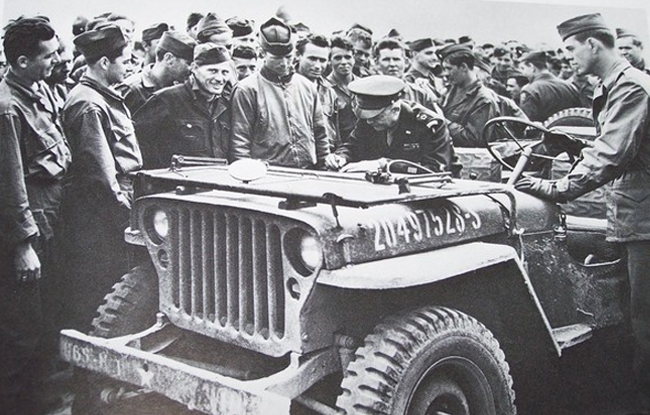
Rectangular rearview mirror and a relocated mirror mounted on the windshield
1. WOA2934 2. WOA11850 3. WO950932 4. WO950933
In conclusion
Understanding the differences between Early, Late, French, and post-war windshields, as well as windshield wiper, glass, and accessory options, will help you maintain and personalize your Jeep optimally.
Get ready to explore the off-road world with a clear view and an authentically equipped Jeep!
